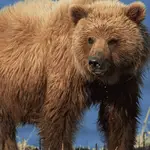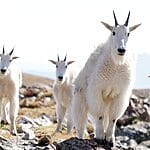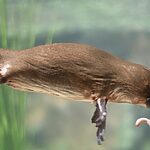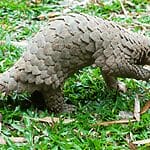09 Interesting Animals in Missouri – You Might Not Know About
Missouri, a midwestern region of U.S., has a diverse landscape, and harbors a wealth of interesting animals, that contribute to the state’s rich biodiversity. From the tranquil waters of its rivers to the rolling hills of its forests, Missouri boasts a remarkable array of wildlife.
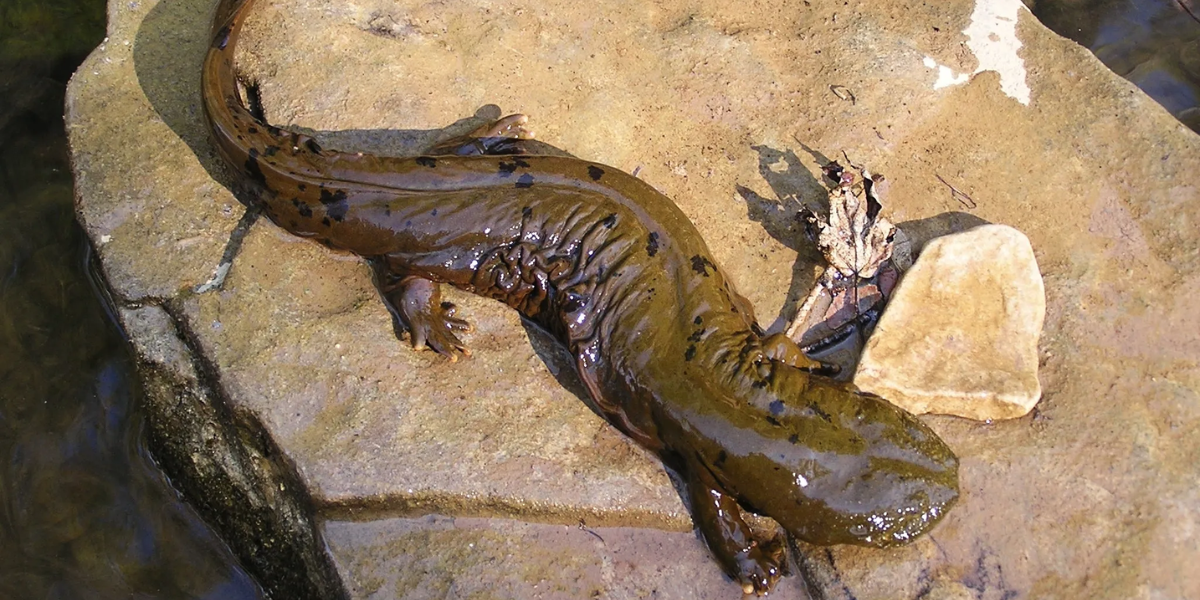
Among the fascinating inhabitants are the Eastern Hellbender, an aquatic giant salamander that calls the streams in Missouri their home, and the Missouri tarantula, a striking arachnid weaving its way through the Ozark habitats.
However, the Missouri state also plays a crucial role in the conservation of endangered and critically endangered species.
The Indiana Bat, listed as an “Endangered Species,” finds sanctuary in Missouri’s limestone caves, while the “Critically Endangered Topeka Shiner,” a petite minnow, faces challenges in specific river systems.
09 Interesting Animals in Missouri – (With their Scientific Name and Interesting Pictures)
Missouri is home to a captivating array of interesting animals, each contributing to the state’s biodiversity. The Eastern Hellbender, an aquatic giant salamander, thrives in the clear waters of Missouri’s streams. The Missouri Tarantula, with its distinctive appearance, wanders through the Ozark habitats, adding intrigue to the state’s arachnid fauna.
In the skies, the Pileated Woodpecker’s vibrant plumage and characteristic drumming sounds make it a notable bird in Missouri’s woodlands.
There are many interesting animal species in Missouri. And in this blog, we have gathered popular national parks in Missouri, and 09 interesting animals in Missouri that are worth exploring.
Some Popular National Parks in Missouri where you can Find Interesting Animals in Missouri – (With Interesting Pictures)
Missouri boasts several captivating national parks, each offering unique landscapes and a haven for interesting animals.
For tourists seeking interesting animals in Missouri, the national parks in Missouri provide historical and natural wonders, and opportunities to observe the diverse fauna that thrives in the Missouri’s varied ecosystems.
Gateway Arch National Park
Situated in St. Louis, this park is anchored by the iconic Gateway Arch, symbolizing westward expansion.

The park offers stunning views of the Mississippi River and the city skyline. Visitors can spot interesting animals like red foxes, white-tailed deer, and a variety of migratory birds.
Ozark National Scenic Riverways
Nestled in southern Missouri, this park features the mesmerizing landscapes of the Ozark Mountains and encompasses the Current and Jacks Fork Rivers. Known for its pristine waterways, tourists can enjoy canoeing, hiking, and cave exploration.
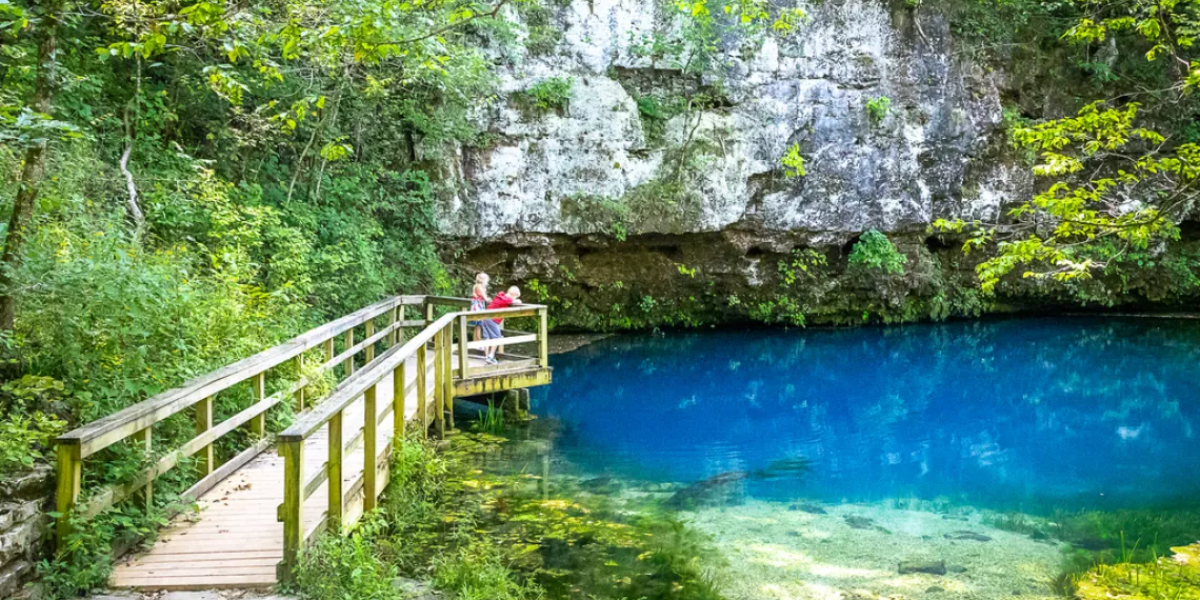
Interesting animals in this national park include river otters, box turtles, and the Eastern Hellbender salamander.
Wilson’s Creek National Battlefield
Situated near Springfield, this park commemorates the Battle of Wilson’s Creek, a pivotal Civil War engagement. The park’s landscapes include wooded hills and open fields.

Wildlife enthusiasts can encounter many interesting animals in this national park such as white-tailed deer, turkeys, and various bird species. Tourists can explore the wild animals, visitor center, walking trails, and historic sites.
Black Bear
Scientific Name: Ursus americanus
Diet: omnivorous
These black bears are one of the most interesting animals in Missouri. They are found in diverse habitats across North America, captivating wildlife enthusiasts with their adaptability.
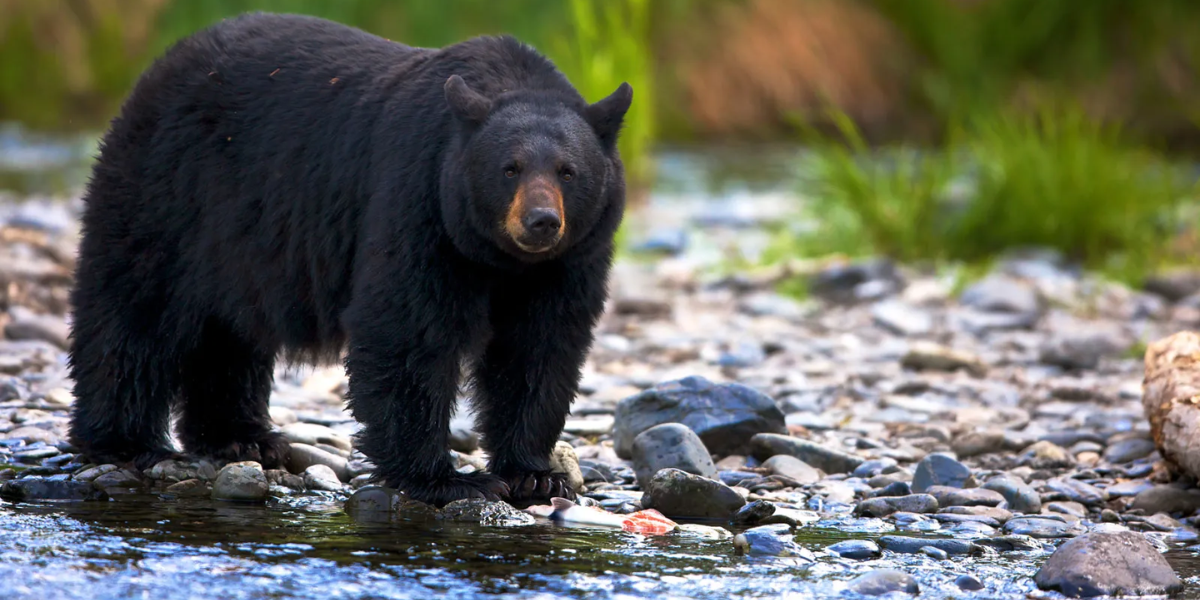
These intelligent mammals inhabit forests, swamps, and mountainous regions, showcasing a preference for dense vegetation and ample food sources.
Moreover, these Black bears are also found in countries such as the United States, Canada, Mexico, and parts of Central America.
The breeding season of this animal species typically occurs in late spring to early summer. Female black bears give birth to one to three cubs after a gestation period of about seven months.
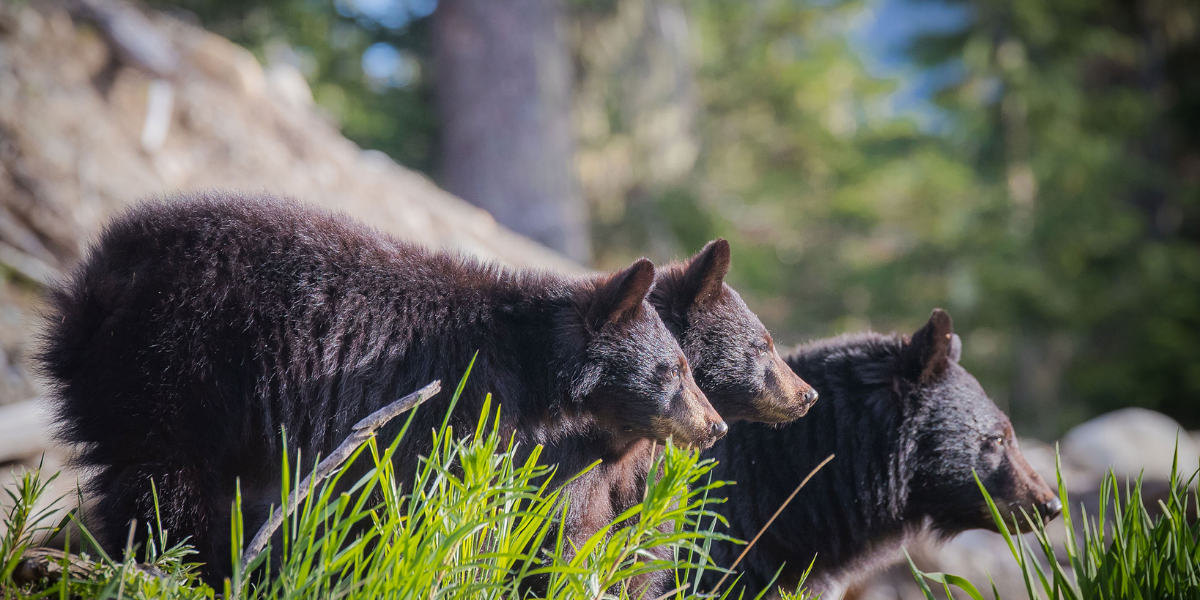
Interestingly, the number of cubs may vary based on factors like food availability and the female’s age and health. Fortunately, the population of black bears is increasing at a rate of nine percent yearly, according to the Missouri Department. These bears are classified as “Least Concern” on the IUCN Red List.
Their population is facing threats such as habitat loss due to urbanization and deforestation, coupled with human-wildlife conflicts. Additionally, illegal hunting and climate change also impact their survival.
Opossum
Scientific Name: Didelphidae
Diet: Omnivores
The Opossums are interesting animals in Missouri, and widely distributed in the Americas. They are also found in countries such as the United States, Mexico, and throughout Central and South America.
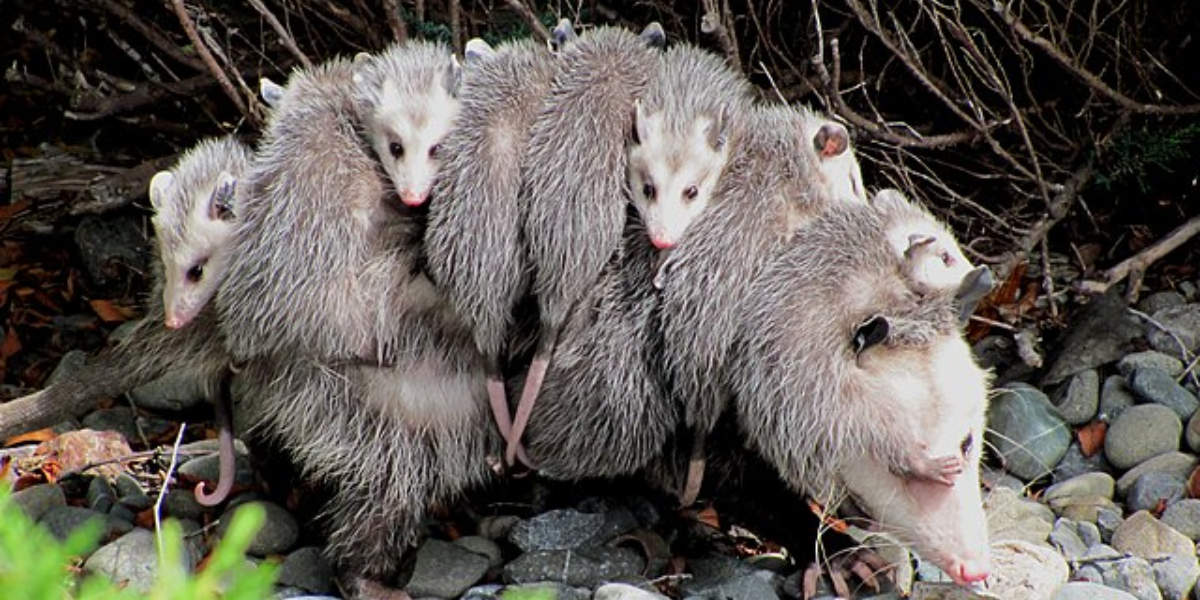
These wild animals showcase adaptability in diverse habitats ranging from forests and grasslands to urban areas. Breeding season for opossums typically occurs in late winter to early summer. Unlike other mammals, females give birth to relatively undeveloped young, with litters ranging from 6 to 25, an impressive number.
Their IUCN Red List status is of “Least Concern,” they confront challenges like habitat fragmentation, vehicle collisions, and predation, especially by domestic pets.
Alligator Snapping Turtle
Scientific Name: Macrochelys temminckii
Diet: Carnivorous
The Alligator Snapping Turtles are interesting animals in Missouri and are inhabitants of Missouri’s waterways. These turtles boast a distinctive appearance with a massive head and a powerful, snapping jaw.
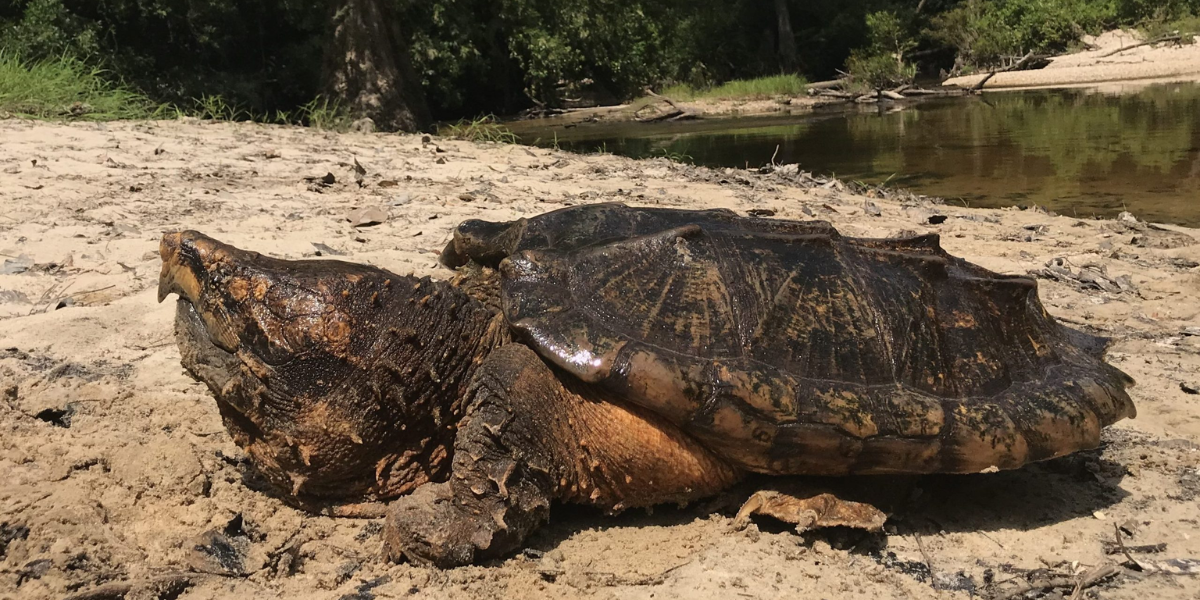
Their population is thriving in freshwater habitats such as rivers, lakes, and swamps. These turtles are known for their patient hunting technique, they lie motionless with their mouth wide open, luring prey.
The breeding season of Alligator Snapping Turtles occurs in late spring to early summer, with females laying clutches of eggs in sandy nests. Each clutch can comprise up to 20 or more eggs.
Their exact IUCN status is not specified, populations are impacted by habitat degradation, water pollution, and overharvesting. Conservation efforts focus on preserving their aquatic habitats and raising awareness about the threats facing these intriguing turtles.
Missouri Mule
Scientific Name: Equus mulus
Diet: Herbivores
The Missouri Mule, an intriguing hybrid of a male donkey and a female horse, has a historical presence as an interesting animal in Missouri, known for its strength and adaptability. Contrary to its name, it is not native to Missouri but has been an integral part of the state’s agricultural history.
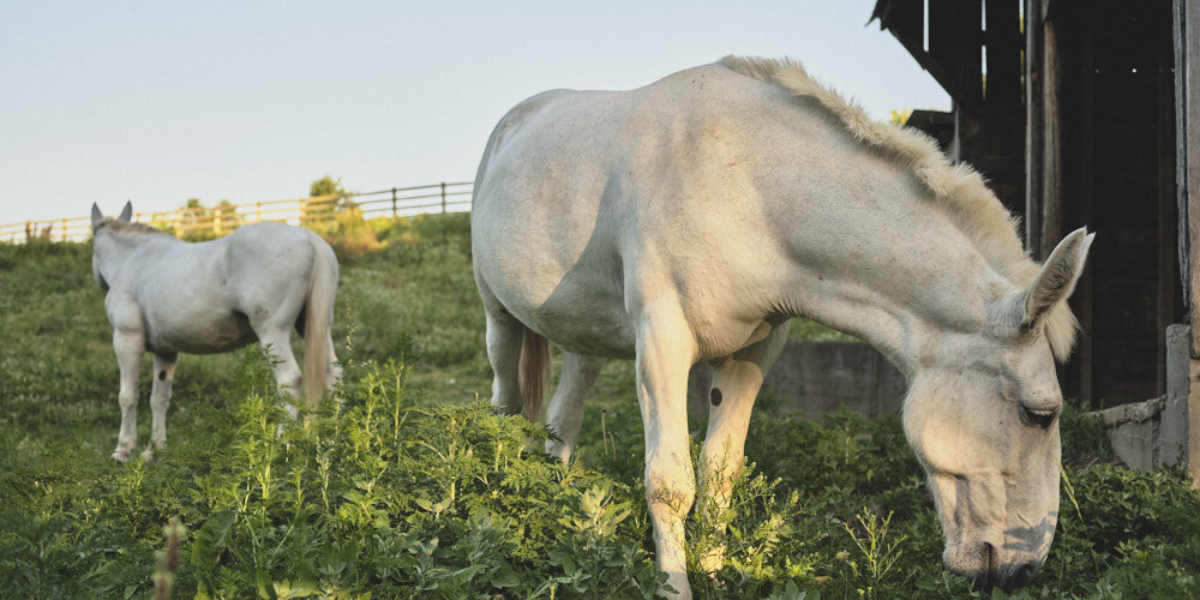
These hybrids are not found in the wild but are domesticated animals that have been used for various tasks, from plowing fields to transporting goods. The breeding season for mules is generally similar to that of horses, occurring during the spring and summer months. However, mules are sterile and do not reproduce on their own.
Why mostly mules are sterile?
Mules are sterile due to a difference in the number of chromosomes between horses and donkeys, their parent species. Horses have 64 chromosomes, while donkeys have 62.
When a male donkey (jack) mates with a female horse (mare), the resulting mule inherits an intermediate number of chromosomes, typically 63. This odd number prevents the proper pairing and separation of chromosomes during the formation of reproductive cells.
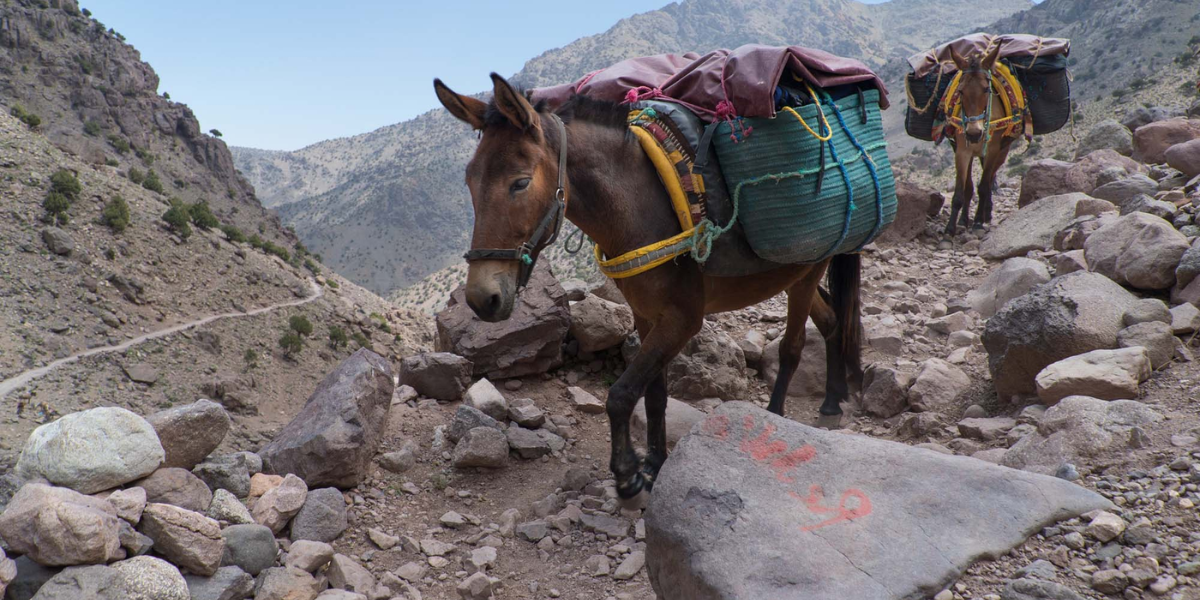
Missouri Mules are not listed on the IUCN Red List. Nevertheless, the challenges they face include potential health issues and considerations related to their care and management,
Copperhead Snake- Venomous Snakes in Missouri
Scientific Name: Agkistrodon contortrix
Diet: Carnivore
These are one of the most interesting animals in Missouri, and are renowned for their distinctive copper-colored heads and intricate patterns.
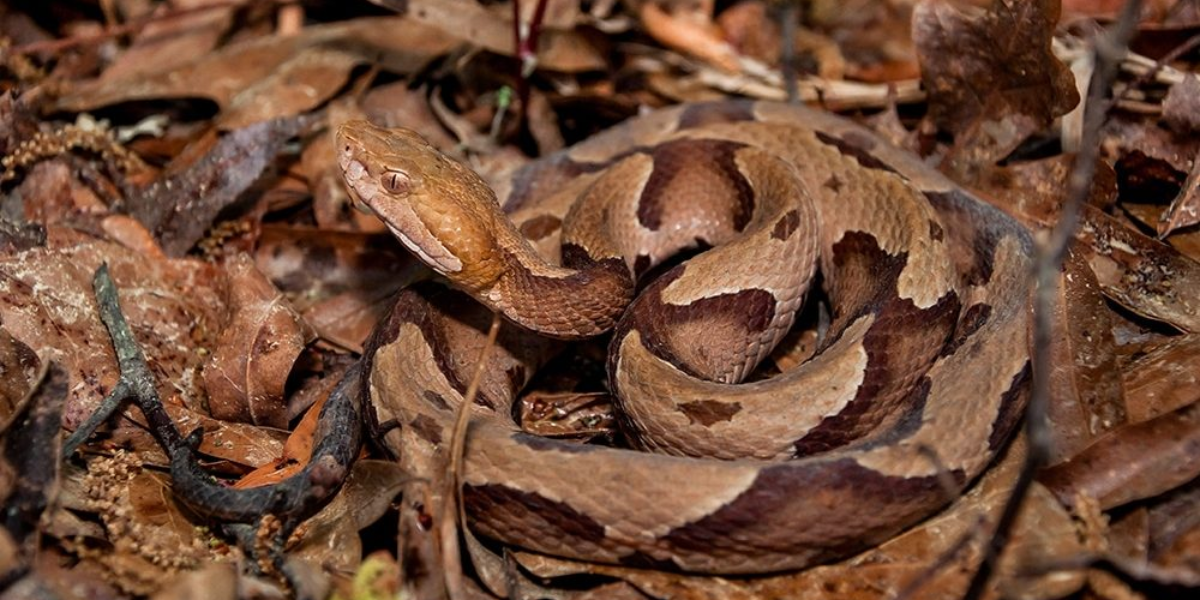
These venomous pit vipers inhabit a variety of environments, from wooded areas and rocky hillsides to marshy regions, demonstrating their adaptability. These snakes can be found in the United States, primarily in the eastern and central regions, stretching from Texas to the Northeast.
Their breeding season typically occurs in late spring to early fall, and females give birth to live young, with a usual litter size ranging from 1 to 18.
Are these snakes are venomous or not? They belong to the family Viperidae, which includes venomous snakes. Copperheads possess venomous fangs, known as “solenoglyphous” fangs, located in the front of their mouths. A bite from a Copperhead snakes can still be painful and cause local tissue damage.
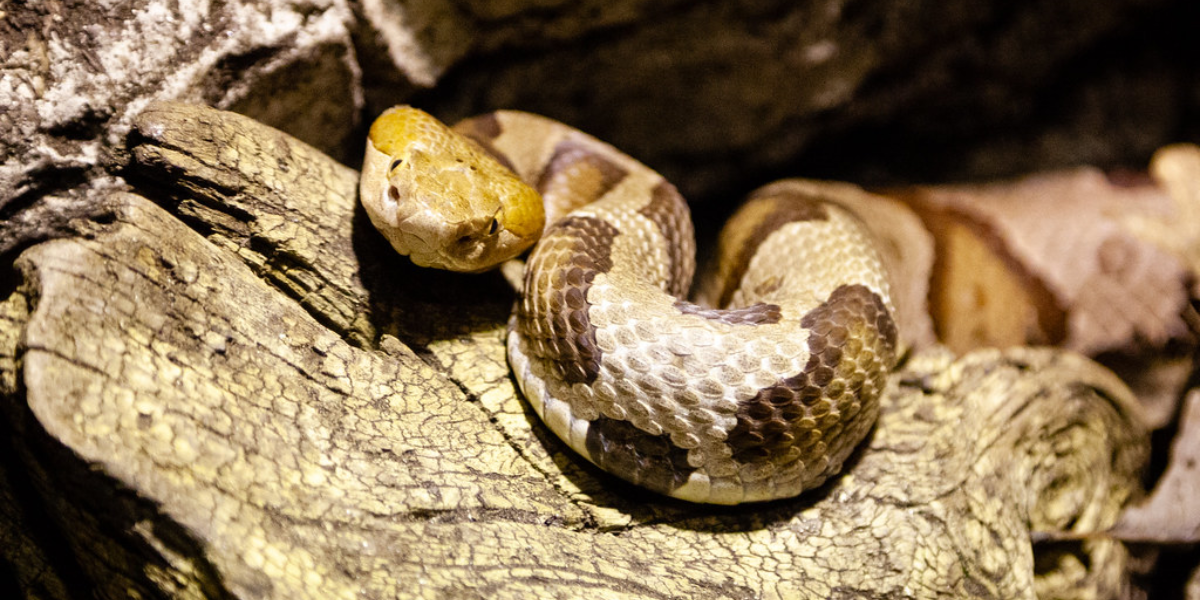
Fortunately, these snakes are listed as “Least Concern,” However, their populations face threats, including habitat destruction, road mortality, and persecution due to misunderstandings about their danger.
Cottonmouth Snake – Venomous Snakes in Missouri
Scientific Name: Agkistrodon piscivorus
Diet: Carnivores
These snakes are also known as the Water Moccasin, is an interesting reptile found in the southeastern United States, including Missouri. They live in aquatic habitats, these venomous pit vipers are often encountered in swamps, marshes, and slow-moving waters.
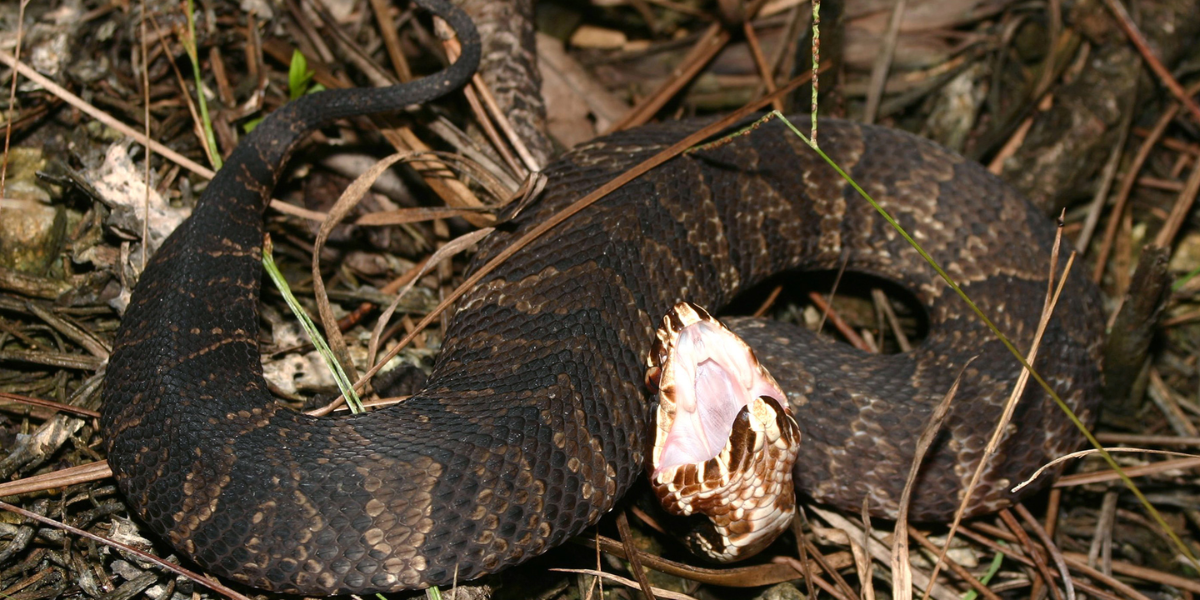
These interesting animals in Missouri have distinct appearances, and characterized by a dark, patterned body and a white mouth, which makes them intriguing but requires caution due to their venomous nature.
Cottonmouths mate in late spring and early summer, giving birth to live young in late summer or early fall. A female may produce around 6-8 offspring per breeding season.
Cottonmouth Snakes are categorized as “Least Concern” on the IUCN Red List of threatened species. However, habitat loss, water pollution, and persecution due to fear pose threats to their populations.
Some Interesting Fishes In Missouri
Rainbow Trout
Scientific Name: Oncorhynchus mykiss
Diet: Carnivores
Rainbow Trout, known for their vibrant colors and remarkable adaptability, are interesting animals in Missouri’s freshwater ecosystems. Native to North America’s Pacific Coast, they have been widely introduced worldwide, including in Missouri’s rivers and lakes.
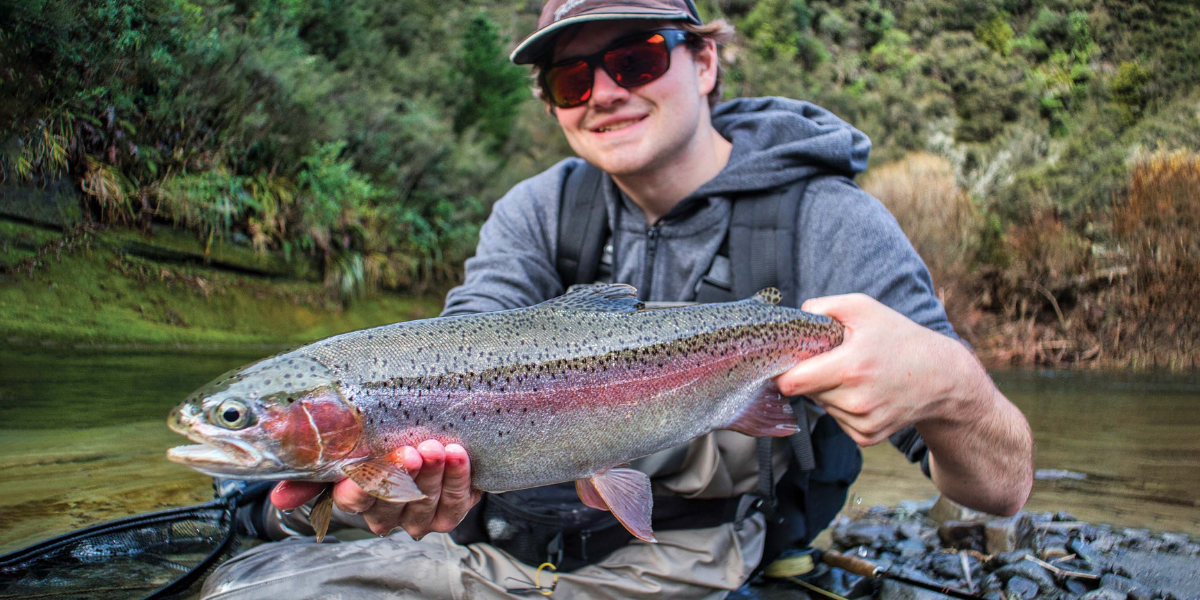
These cold-water fish thrive in clear, well-oxygenated streams with gravel bottoms, providing ideal conditions for spawning. Rainbow Trout typically spawn in late winter to early spring, with females creating nests called redds in riverbed gravels.
A single female can lay thousands of eggs, and after hatching, the fry emerge, facing various challenges in their early stages of life. While Rainbow Trout are not individually assessed on the IUCN Red List, their overall populations are affected by habitat degradation, pollution, and competition with non-native species
Brown Trout
Scientific Name: Salmo trutta
Diet: Carnivorous
The Brown Trout (Salmo trutta) is a fascinating freshwater fish renowned for its adaptability and sporting appeal. These interesting animalsare native to Europe, including countries like Germany and the United Kingdom.
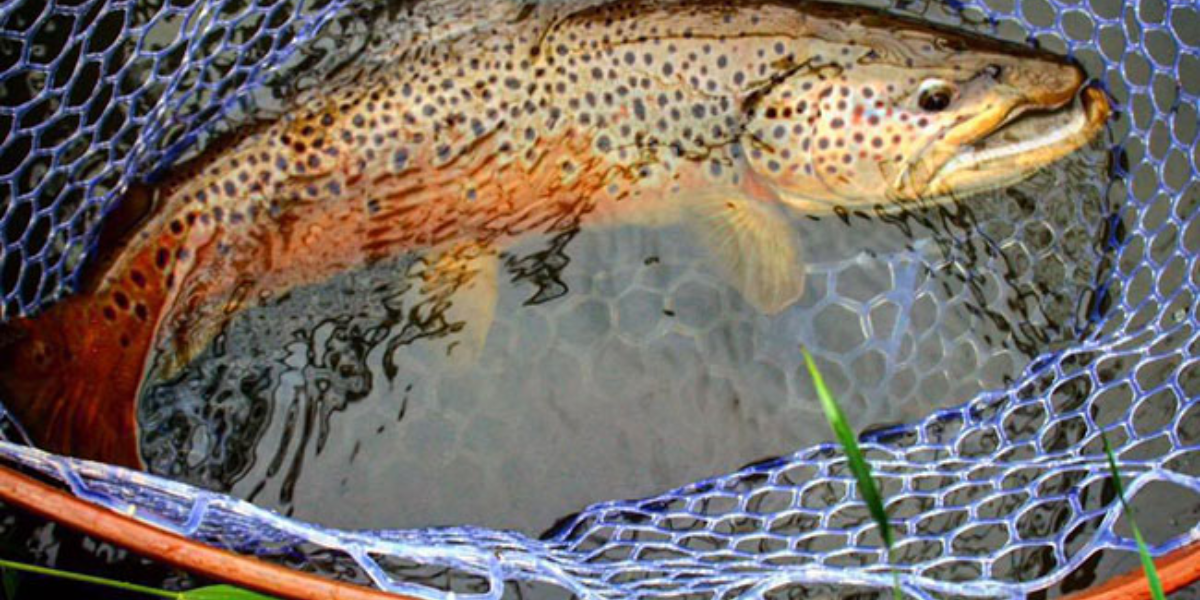
Brown Trout have been introduced to various regions worldwide, thriving in both freshwater streams and lakes. In Missouri, these interesting animals have been stocked in many rivers, providing exciting opportunities for anglers.
Brown Trout typically spawn in the fall, with females creating nests called redds where they deposit eggs. A single female can produce thousands of eggs, contributing to the species’ reproductive success.
While not assessed on the IUCN Red List, however their population is facing threats due to habitat degradation, pollution, and climate change.
Channel Catfish
Scientific Name: Ictalurus punctatus
Diet: Omnivores
The Channel Catfish, a fascinating freshwater species, is widely distributed in North America, including Missouri’s waterways. These interesting animals thrive in a variety of habitats such as rivers, lakes, and ponds with slow to moderate currents.
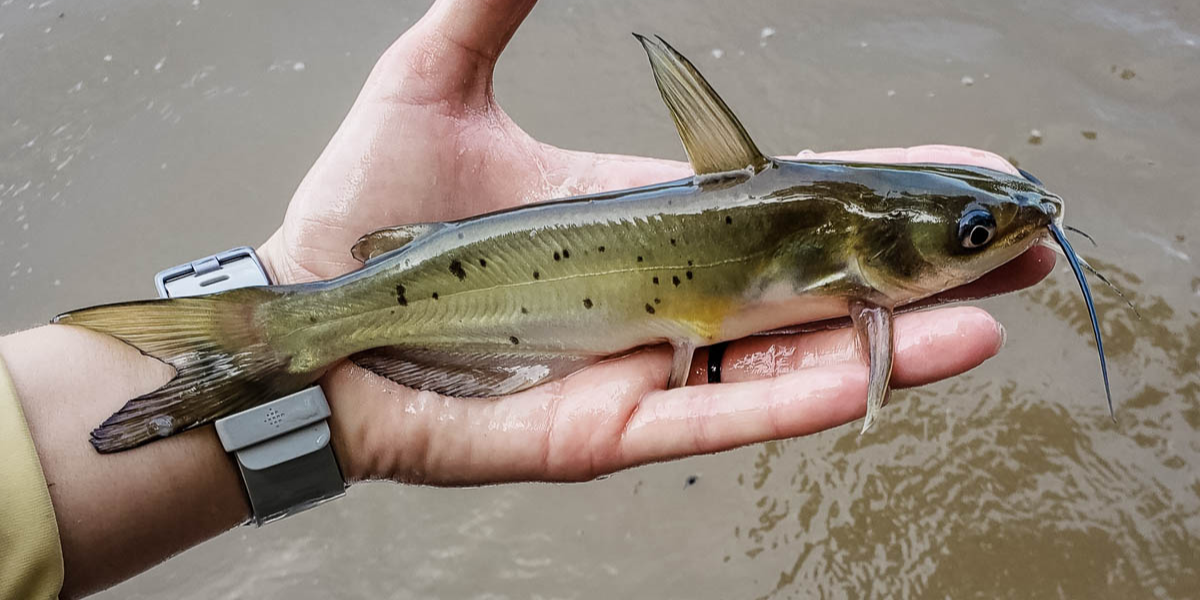
These interesting animals can be recognized for their distinctive forked tail and smooth, scaleless skin, Channel Catfish are popular among anglers. Breeding season typically occurs during late spring or early summer when water temperatures rise.
The female may lay thousands of eggs, which are guarded by the male until they hatch. Channel Catfish are not assessed on the IUCN Red List, reflecting their stable populations.
Additionally, the health of Channel Catfish populations is influenced by factors like water pollution, habitat degradation, and overfishing.
Frequently Asked Questions about Interesting Animals in Missouri
What tree is invasive in Missouri?
Callery pear trees are invasive species in Missouri.
What are the rarest animals in Missouri?
Redfin darter, and vaquita are the rarest animals in Missouri.
What animal is Missouri known for?
Mules are the popular, and official animal in Missouri.
What is the largest predator in Missouri?
The American black bear is the largest predator in Missouri.
What animals come out at night in Missouri?
Deer, raccoons, foxes, coyotes, opossums, skunks, beavers, bobcats and badgers are nocturnal animals that comes out at night in Missouri.
What is Missouri’s wildlife?
Black bears and feral hogs are some interesting animals in Missouri’s wildlife.
What is the largest predator in Missouri?
The black bear is the largest predator in Missouri.
- What Should I Do If A Koala Bites Me? Safety Guide - 2024-05-30
- Are Kangaroos Born Without Hind Legs? A Fascinating Journey - 2024-05-30
- Animals That Look Like Squirrels - 2024-05-30



